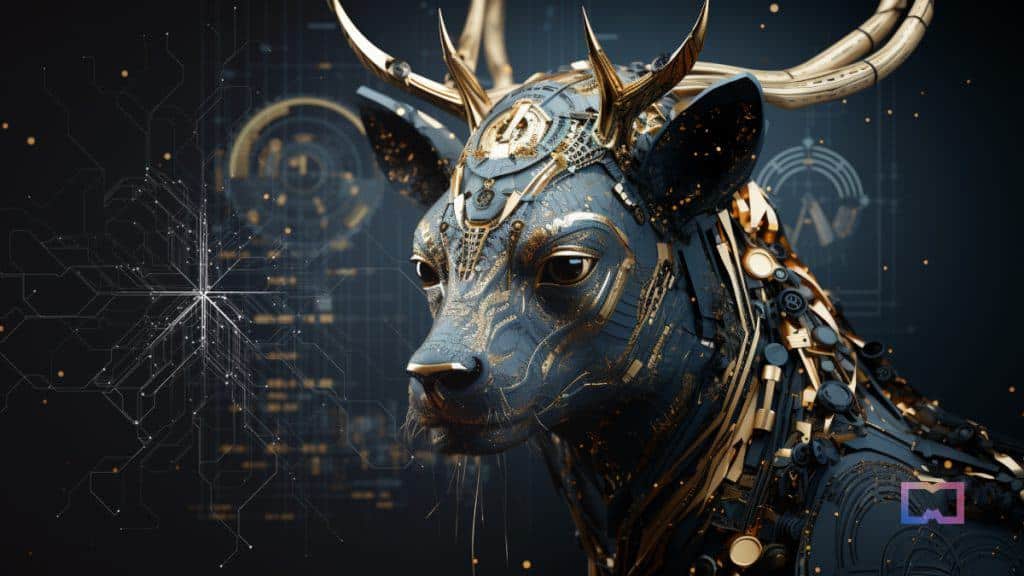The AI revolution is making strides in understanding ancient languages, animal interactions, and plant communications.
In Brief
Advanced systems like Ithaca now allow us to unlock the secrets of ancient scripts and cuneiform, enhancing text restoration, pinpointing geographical origins, and establishing chronological timelines.
This groundbreaking technology has also made waves in the realm of animal communication by identifying their distinctive dialects.
Moreover, artificial intelligence is becoming instrumental in interpreting how plants convey messages, enabling agritech professionals to monitor, diagnose, and enhance plant growth effectively.

For centuries, scholars have encountered significant obstacles when trying to decode ancient writings. Enter a new age where researchers are using cutting-edge AI to quickly translate these historical texts into modern English. In this article, we will explore the diverse applications of AI, from unraveling ancient scripts and understanding animal languages to examining the mysterious forms of communication used by plants.
A Digital Revolution for Decoding Ancient Texts
Just last year, a revolutionary AI framework called Ithaca was introduced. Ithaca Ithaca, an intricate deep learning network, is an invaluable resource for scholars studying ancient Greek inscriptions, many of which have suffered damage, alteration, and uncertainty over time. With its capabilities in text rehabilitation, geographic sourcing, and chronological placement, Ithaca has proven to be an essential asset for epigraphers and historians alike.
The design of Ithaca focuses on enhancing teamwork, offering decision-making assistance, and ensuring clarity, leading to a significant boost in accuracy. When historians work with Ithaca, the accuracy of their restorations jumps from a mere 25% to 72%, illustrating the remarkable collaboration of AI and human insight.
Ithaca can effectively identify the original locations of inscriptions with a 71% accuracy rate and can date them within a 30-year range of their actual time period, shedding new insights on the storied history of Classical Athens and fueling ongoing discussions in the field of ancient history.
AI systems like Ithaca are opening doors for a collaborative approach between technology and historians, potentially transforming the techniques used in our exploration and understanding of one of the most crucial periods in human civilization.
Translate Ancient Texts to English with AI
To help illustrate the application of Ithaca, let's examine Cuneiform as a pertinent example.
Cuneiform, recognized as one of the earliest writing systems known to humanity, contains an abundance of historical data preserved within clay tablets. According to Oxford Academic, 'hundreds of thousands of these texts have been discovered in the last two hundred years, primarily composed in Sumerian and Akkadian.' report These inscriptions narrate the intricate aspects of ancient Mesopotamia, encapsulating everything from governance to trade. Yet, the sheer volume of texts and the limited number of specialists available to decipher them have left many of these documents untouched for years.
Ithaca has succeeded in precisely translating texts from Akkadian to English based on Cuneiform glyphs or their transliterations. The model is particularly adept at maintaining the genre and stylistic elements of the original writings, which is particularly vital for shorter documents.
As the repository of digitized texts continues to expand, Ithaca can further adapt through continual training, enhancing our understanding of the culture and history of ancient Mesopotamia.
Recently, Luke Farritor, a 21-year-old computer science student, achieved a significant milestone by winning the 'first letters' prize in the Vesuvius Challenge for deciphering the first readable text from a carbonized scroll found in Herculaneum.
AI Can Decipher Herculaneum Scroll
This ancient scroll had been illegible since the catastrophic eruption of Mount Vesuvius in 79 AD, which also sealed the fate of Pompeii. This success paves the way for unlocking countless texts from the sole surviving library of Greco-Roman times.
Farritor designed a machine-learning algorithm that recognized Greek letters across multiple lines of the rolled papyrus, including the term 'purple' (πορϕυρας). He utilized subtle variations in surface texture to train his neural network and enhance the depiction of the ink.
This breakthrough not only stirs excitement among historians and papyrologists, but it also holds the potential to elevate our grasp of ancient narratives and literature. Until now, pieces of these scrolls have only been studied, many containing Greek writings linked to the Epicurean philosophical tradition. explained The Vesuvius Challenge, which offers appealing incentives for reading these scrolls, aims to stimulate further decoding efforts, capitalizing on the capabilities of AI and machine learning to explore the hidden treasures of ancient literature.
In addition to ancient languages, researchers are utilizing AI to investigate various aspects of animal behavior and communication, from New Caledonian Crows utilizing tools to sperm whales relying on codas to distinguish each other.
The Vesuvius Challenge AI models, enriched by extensive datasets of animal sounds, can unveil patterns and details in animal communications that were previously challenging to perceive. This technology not only honed our understanding of animal feelings and social hierarchies but could also further conservation initiatives.
AI Can Understand Animal Language
In their research on the codas of sperm whales, scientists turned to AI to expedite translation efforts. They tested their methods by feeding the recordings of scientist Shane Gero into a neural network, which analyzes data patterns. To their astonishment, the network accurately identified specific whales based on their sound patterns with a 99% success rate. to decode animal communication Inspired by this achievement, the team has set a formidable goal: to analyze a wealth of underwater sounds and program a computer to understand and communicate in a manner akin to whales. Under the auspices of Project CETI, led by Gero, they aim to deploy an underwater microphone attached to a buoy to capture the ongoing vocalizations of resident whales in Dominica.
AI Enhances Animal Conservation and Communication with Pets Scientific American Experts believe that decoding animal vocalizations could greatly impact efforts to conserve endangered species. The Hawaiian Crow, or 'Alalā', went extinct in the wild in the early 2000s, leading to the remaining birds being kept in captivity for breeding initiatives aimed at preservation. To facilitate their return to native habitats, Christian Rutz, who has studied New Caledonian Crows, is teaming up with the Earth Species Project to dissect the Hawaiian Crow's vocal repertoire.
Rutz is compiling a database of calls made by captive birds and contrasting these with historical recordings of the last wild Hawaiian Crows. This study seeks to ascertain whether captive individuals have lost essential calls related to mating or predator alerts, possibly clarifying the challenges faced in rehabbing them back to the wild.
Additionally, researchers found that orca whales communicate using unique dialects that resonate within their pods while also interacting with different species in various dialects.
Further AI discoveries indicate that dolphins, like belugas and bats, possess names given to them by their mothers, which they utilize in their vocal interactions. Even elephants display communication through signaling, alerting their groups to the presence of honeybees, which could pose a hazard if encountered in their trunks or ears.
Moreover, researchers at Tel Aviv University, spearheaded by Yossi Yovel, have enlisted AI to decipher the vocal patterns of Egyptian fruit bats.
During a span of two and a half months, they captured and documented the vocalizations of these bats, subsequently employing a voice-recognition program to decode the sounds, associating specific vocalizations with social behaviors observed in recorded footage. This particular investigation is part of a broader initiative to unravel animal communication, potentially enabling us to gain deeper insights into our own pets like dogs and cats.
How artificial intelligence is helping scientists talk to animals - BBC News
As AI technologies evolve to interpret animal communication, their applications broaden. They not only decode wildlife vocalizations but also dissect the behavior of household pets, enhancing animal care and aiding in the conservation of species at risk of extinction. Elodie F. Briefer, a specialist in animal behavior, has developed an algorithm that evaluates animal emotional states through their vocal expressions.
Nonetheless, the incorporation of AI into animal communication raises ethical dilemmas. The technology's potential for misuse—ranging from precise fishing techniques to impersonating animal sounds—highlights the necessity for ethical frameworks and regulations to protect both wildlife and their ecosystems. The AI-driven advances in animal communication promise a future where we unlock shared experiences and emotions across species lines. As Scientific American noted, researchers anticipate that while animals might not utter phrases like 'pass me the banana,' they may communicate some universal indicators of feelings such as 'grief' or 'hunger.' This technology nurtures a new form of connection between people and animals, shedding light on shared emotions and experiences. As AI continues to reshape our insights into animal dialogue, it provides a fresh lens through which to view our place in the natural world.
Artificial Intelligence Now Capable of Understanding Ancient Languages, Animal Interactions, and Botanical Signals - Metaverse Chronicles
The advent of AI technology is fundamentally changing how we perceive ancient languages, animal interactions, and the signals emitted by plants.
Artificial Intelligence Now Capable of Understanding Ancient Languages, Animal Interactions, and Botanical Signals
For many years, experts in archaeology have faced the daunting challenge of interpreting ancient languages and scripts. However, a new chapter begins as
Can AI Communicate with Plants?
FTC Fails to Overturn Decision Against Microsoft-Activision Merger extends Date of Publication: October 17, 2023 at 5:38 am | Last Updated: October 17, 2023 at 8:55 am
To enhance your experience in your local language, we occasionally utilize an automatic translation tool. Please be aware that auto-translation may lack accuracy, so approach with care.
Recent advancements in AI enable the interpretation of ancient writings and cuneiform. Platforms like Ithaca are enhancing the restoration of texts, pinpointing their geographical origins, and estimating their historical timelines.
This innovative technology is also making waves in the field of animal communication, as it is learning to interpret their distinct dialects.
Moreover, artificial intelligence is crucial in decoding how plants communicate, allowing professionals in agritech to monitor, diagnose, and optimize the growth of various crops.
AI's Significant Discoveries in Ancient Languages and Animal Communication
Historically, decoding ancient scripts has posed significant hurdles for archaeologists. Nevertheless, we are witnessing a groundbreaking era where researchers leverage AI to efficiently translate these historic texts into contemporary English. Here, we explore the multifaceted capabilities of AI—from decoding ancient scripts and unraveling the mysteries of animal languages to shedding light on the complex communication networks of plants.
A Technological Breakthrough in Deciphering Ancient Texts
In the previous year, an innovative AI system named
was unveiled. Ithaca, an advanced deep learning network, has become an indispensable resource for examining ancient Greek inscriptions, many of which have been degraded, displaced, and surrounded by uncertainty throughout history. With a focus on text restoration, geographical context, and chronological dating, Ithaca provides invaluable assistance to scholars and historians alike.
Read more:
- Ithaca's design prioritizes teamwork, decision support, and transparency, leading to a remarkable increase in accuracy. On its own, it achieves 62% accuracy in restoring texts, but when historians collaborate with it, their success rate jumps from 25% to an impressive 72%, showcasing the dynamic partnership between technology and human insight.
- The system can also accurately connect inscriptions to their historical locations with 71% precision and date them within a 30-year range of their actual age, illuminating the history of Classical Athens and contributing to ongoing discussions in ancient studies.
- AI solutions like Ithaca are set to foster a collaborative environment where artificial intelligence and historians work hand in hand, fundamentally transforming how we analyze and document one of the pivotal epochs in human history.
Disclaimer
In line with the Trust Project guidelines Using AI to Translate Ancient Texts into English







